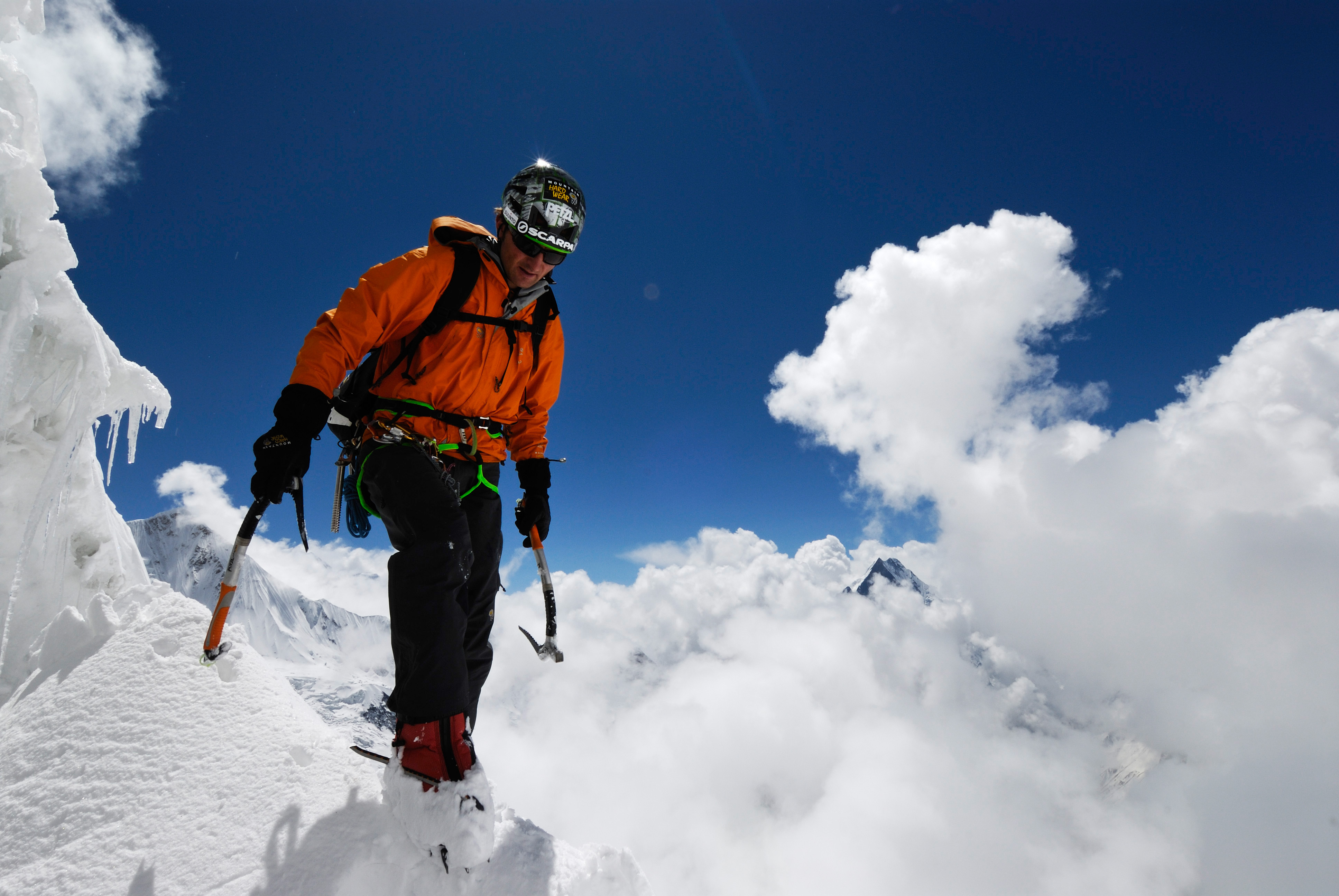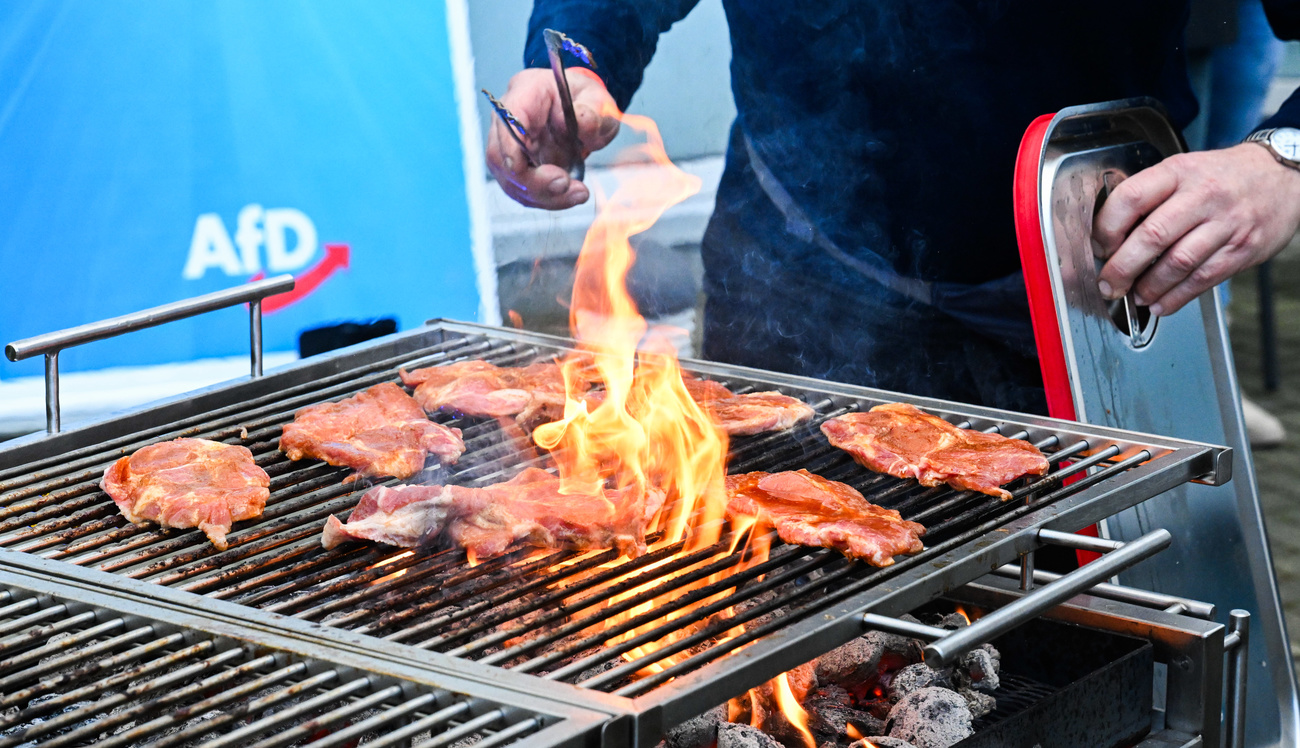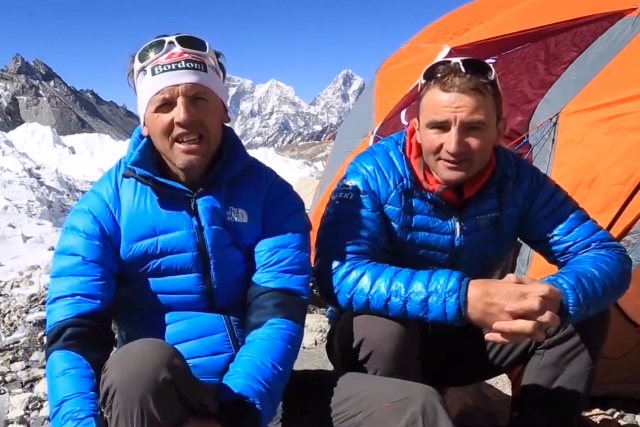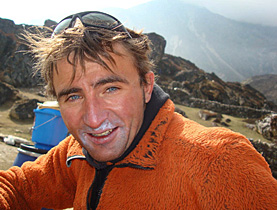‘More human’ Ueli Steck returns to Himalaya

Renowned Swiss climber Ueli Steck - back in Nepal to tackle one of the most dangerous 8,000m-peaks - tells swissinfo.ch why he decided to return to the Himalaya after a highly publicised fight with a group of Sherpas on Mount Everest last spring.
Steck’s return to Nepal comes a little over four months after having left Mount Everest with a bitter taste in his mouth. Vowing he would not go back to the highest mountain in the world, he will now attempt the South Face of Annapurna I for the third time, together with Canadian climber, Don Bowie.

More
Ueli Steck on his return to the Himalayas
swissinfo.ch: You are back to climb the South Face of Annapurna, which will be your third attempt. This expedition must be quite difficult for you given the fact what happened on Everest this spring. How does it feel to be back?
Ueli Steck: After what happened in spring, coming back to Nepal is really important for me. I just need to feel what’s going on here. I completely changed my mind about the country and about how things work here. I think the incident has opened my eyes a little bit about Nepal, which is good. I sorted it out and for me it is ok. The spring expedition is over, and it was certainly not the greatest story I’ve ever had, but it happened.
The South Face of Annapurna I is an old project. I have attempted it twice already and I guess you need patience if you want to climb hard routes on an 8,000m-peak. Sometimes you have a lucky punch, but often you have to go back, and everything has to be right.
On April 28, Swiss climber Ueli Steck, together with Italian mountaineer Simone Moro and British photographer John Griffith, were attacked by dozens of Sherpas at Camp 2 at 6,400m on Mount Everest.
The assault happened a few hours after the three climbers had overtaken the rope fixing Sherpas who were on their way up to Camp 3 at 7,300m to prepare the route for commercial expeditions.
The three European climbers called off their Everest attempt.
swissinfo.ch: When you attempted the face for the first time in 2007, you were hit by a rock that could have killed you. In 2008, you abandoned your climb to rescue the Spanish climber Iñaki Ochoa de Olza, who died shortly after you arrived at his camp. Going back must be mentally quite a challenge.
U.S.: After Iñaki [died], I had to get off the face immediately and needed some time to get over it. If I had gone back the following season, I would not have been prepared for it. I would have been too scared. After a few years and some good experiences on 8,000m peaks, I feel that the fire is back and I want to finish this project. I have a lot more experience than I had in 2007 and 2008. I apply new tactics and I am no longer focused on only one route. I am now able to adapt more to the weather and the conditions.
swissinfo.ch: Why are you coming back now? You just mentioned that you have to have good experiences on mountains to go back, however, you had a very bad one this spring. Did you have enough time to get over it?
U.S.: I am far from being over the Everest story. This is something different and it will take years. But life goes on, and you have to move on. You cannot sit at home and twiddle your thumbs. I have the urge to climb high, and unfortunately most of the 8,000m peaks are in Nepal, so I am forced to come back here. On the other hand, it is also good for me to be back: I have to talk to the people and build up relationships again, which will probably help me get over this story.
swissinfo.ch: Are you also a little bit under outside pressure to come back here and complete this project? Or is Annapurna something you really want to do?
U.S.: The South Face of Annapurna is definitely something I want to do from my heart, and I have always done that. A lot of sponsored climbers work differently. They often get their trips paid by their sponsors, and then you have to do what they want. I want to do my own thing and if I find a sponsor to cover my costs, that’s great, however, if I don’t, then I pay myself. I have always had this freedom in my life and I want to keep that.
swissinfo.ch: You obviously have big sponsors. How did they react after the incident on Everest? Did it dent your image with the sponsors, or was it even good for your image?
U.S.: Funnily enough, I think the incident actually made me a lot more human. That’s really what happened. The sponsors also got a lot of media coverage without having to push too hard. And of course, everybody knows me now. I obviously do not like this kind of image at all. I don’t want to be in the media with stories like that but it is impossible to avoid.
swissinfo.ch: You usually climb without high altitude Sherpas. However, will there be any Sherpas on this trip, and how do you feel about it?
U.S.: Of course, there will be Sherpas for base camp support. We will also have one Sherpa, who will go back and forth to our ABC [at about 5,000m]. We will carry most of our gear ourselves but it is also good to know that there will be someone to help us. And if the kitchen boy wants to make more money, he can also come up.
Annapurna I (8,091m) is the 10th highest mountain in the world and is located in the west of Nepal.
It was first climbed via the North Face by a French expedition led by Maurice Herzog in 1950.
Annapurna I is notorious for its avalanche danger and legendary climbers like Anatoli Boukreev from Russia and Christian Kuntner from Italy died on the mountain.
French climbers Pierre Beghin and Jean-Christophe Lafaille attempted the same route in 1992 but Beghin fell to his death and Lafaille took five days to get down the mountain on his own.
Lafaille died on Makalu (8,463 m) in December 2004 attempting a solo winter ascent.
swissinfo.ch: Do you feel that you can trust them?
U.S.: My perception of people has changed a lot in general, not only of the Sherpas. After what happened in spring, I have a hard time trusting people until this very day. I have built a wall between me and other people, which has not been broken yet.
swissinfo.ch: Even though Annapurna I is one of the lower 8,000m-peaks it is considered one of the most dangerous. Has your perception of danger changed since you noticed that Camp 2 on Everest could also be perilous?
U.S.: Very true: Camp 2 on Everest is a lot more dangerous, and it is hard to predict. Everyone calls Annapurna the most dangerous 8,000-m peak, which is due to the many seracs and avalanches on the normal route. Being very far in the south, the mountain gets a lot of moisture, which means it snows a lot. This is one of the reasons why I am relatively late in the season.
swissinfo.ch: If you are third time lucky and reach the summit, this dream will be realised. What is your next dream?
U.S.: I was thinking a lot about it this summer. Especially after the Everest experience, I think I will stay on technical faces on 8,000m-peaks, so nobody can bother me. That‘s what I am interested in. There is still a lot of work to be done on these 8,000m peaks, and there is certainly a lot of space to go climbing.
Born in 1976 in Langnau, in the Bernese Emmental. Became known as the “Swiss Machine” thanks to a 2010 film about him of the same name.
In 2001, completes first solo ascent of the Eiger north face in 10 hours. Within two years, beats the record of four hours and 30 minutes.
Steck has climbed all the major peaks in Switzerland as well as many across North America and the Himalayas.
In February 2008, Steck set a new solo climbing record on the Eiger North Face by summiting in 2 hours, 47 minutes.
May 18, 2012 – Ueli Steck summits Mount Everest for the first time, without supplementary oxygen
April 2013 – a fight between Steck’s group of climbers and a group of sherpas at Everest base camp threatens to become violent. Steck leaves the Himalayas as a result and returns to climbing in the Alps.

In compliance with the JTI standards
More: SWI swissinfo.ch certified by the Journalism Trust Initiative











You can find an overview of ongoing debates with our journalists here . Please join us!
If you want to start a conversation about a topic raised in this article or want to report factual errors, email us at english@swissinfo.ch.